|
DAVINCI - VIRGIN OF THE ROCKS - LONDON - PAGE
3
|
Asherah Missing in the Translation |
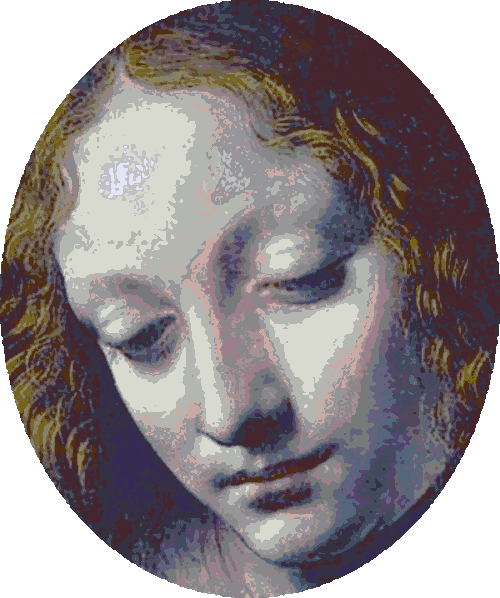
Queen of Heaven |
- The study of Asherah begins with a deeper understanding of the historical context in which she was worshiped.
- Ancient Canaanite religion flourished in the regions comprising modern-day Israel, Palestine, Lebanon, and parts of Jordan and Syria.
- This
was a polytheistic belief system that revolved around a pantheon of gods and goddesses, with Asherah standing as one of the central deities.
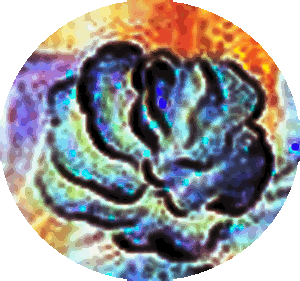
Crops flourishing |
- Asherah was seen as a mother figure and associated with fertility, nurturing, and the natural world.
- Her influence extended to aspects of life such as love, family, and the flourishing of crops.
-
Asherah was the mother of 70 or 77 divine sons, and held immense importance as a mother goddess figure.

Divine feminine |
- Within the Canaanite pantheon, Asherah held
various roles and attributes.
- She was regarded as the consort of the supreme god El and played a vital role in the divine assembly.
- Asherah’s role as the consort of both El and YHWH
has been a subject of much discussion.
- This is that the divine is 'as above, so below' we have
a heavenly father and an earthly one.
- She was recognized as an important companion to both deities, symbolizing the divine feminine within their pantheon.
|
This aspect of Asherah highlights her significant position in ancient Canaanite and Israelite religious beliefs, where she was revered alongside the male gods. (oldworldgods.com) |
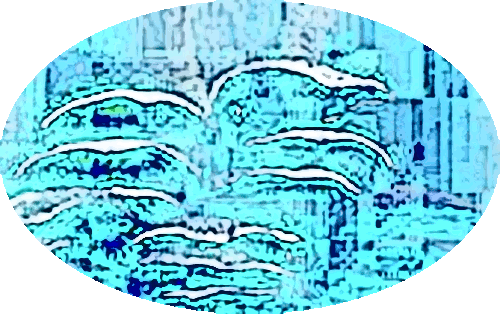
Harmonic force |
- Asherah represents the archetype of
'Divine Wisdom' or a force symbolizing harmony, protection and
creation.
- She complemented and balanced the masculine
aspect of the biblical YHWH.
- This view of the divine, as a union of
feminine and masculine forces, provides a broader and more
inclusive understanding of spirituaity.
|
Although Asherah is the name of a sensual
Canaanitish goddess Astarte, the feminine of the
Assyrian Ishtar, it is typified by the stem of a tree
deprived of its boughs, and uncivilly shaped into an
image, and planted in the ground.
(Wikipedia) |

Sophia is Wisdom
|
- In Gnostic tradition, Asherah is
referred to as 'Sophia,' reinforcing the vision of
spirituality where the divine is seen as a union of polarities
rather than as exclusively masculine.
- The removal of
Asherah from the 'official' tradition not only altered the
view of the sacred, but also impacted human spirituality on a
much deeper level.
|
I am the wife and the virgin.
I am the mother and the daughter.
I am the limbs of my mother.
I am a barren woman
who had many children.
I have had many weddings
and have taken no husband.
I am a midwife
and a woman who does not give birth.
I am the solace of my own birth pains. (Song of Eve) |
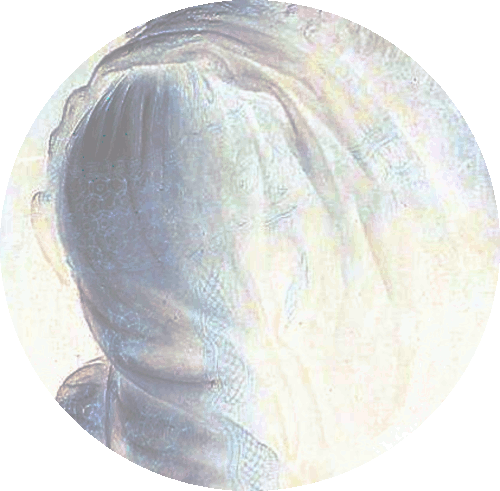
Secrets hidden |
- Imagine a knowledge so powerful
that it could transform your entire perception of reality.
- A secret preserved since the dawn of civilization that was
safeguarded in ancient rituals and symbols which were passed
down through the generations.
- They were purposely hidden
to prevent indiscriminate access.
- This secret never disappeared
because it was hidden to protect humanty from a power that has
always been available in each of us.
|
I am bride and groom,
and my husband produced me.
I am the mother of my father,
and the sister of my husband,
and he is my offspring.
I am the servant of him who fashioned me.
I am the ruler of my offspring.
He (produced me) with a premature birth,
and he is my offspring born on time,
and my strength is from him.
I am the staff of the power in his youth,
and he is the rod of my old age,
and whatever he wishes happens to me. (Song of Eve, Thunder 13-19-14, 9) |
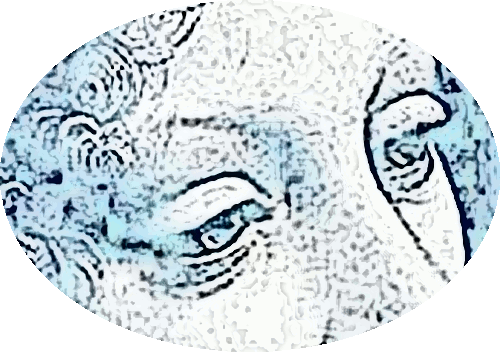
Figure of Asherah |
- When you look deeper you find the
figure of Asherah, a presence nearly erased from tradition and
history, who fortunately still survives in ancient text and
sacred symbols.
- This is the ancient knowledge suppressed
by the church.
- Asherah was revered as a goddess and the
partner of YHWH (Yahweh aka Jehovah) in the Canaanite pantheon, and she represented the feminine
aspect of the divine.
|
The Canaanite goddess Asherah was a widely worshiped figure in the ancient Near East. Often depicted as a nude female with exaggerated breasts and flowing garments, she was associated with the sea and played a role in the struggle against the god Baʾal.
(oldworldgods.com) |
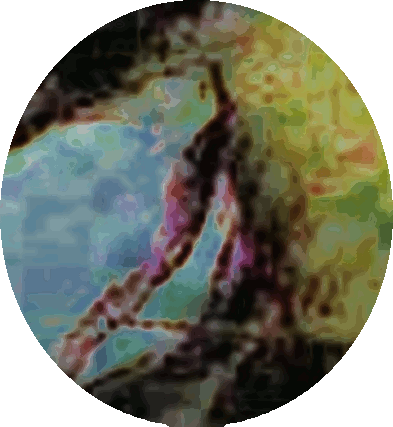
Mysterious figure |
- Traces of Asherah are still
discernable in the scriptures, especially in the wisdom texts.
- For example, in Proverbs, there is a personification of
Wisdom, a mysterious figure who speaks of protection, life and
knowledge.
|
Out in the open wisdom calls aloud,
she raises her voice in the public square;
on top of the wall she cries out, at the city gate she
makes her speech: “How long will you who are simple love your simple ways?
How long will mockers delight in mockery
and fools hate knowledge?
Repent at my rebuke!
(Proverbs 1:20-23) |
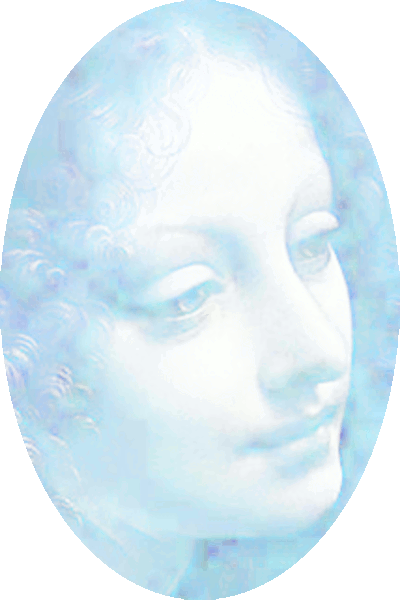
First the mother |
- She was first the mother and later made the wife of YHWH and was worshiped alongside
him in his temple in Israel and ancient Israelites worshiped both
YHWH and Asherah.
- Over time, this view became
unacceptable to post-exilic religious traditions and her
presence was nearly erased from official texts.
|
There was an inscription found that asks for a blessing from 'Yahweh and his Asherah'. evidence that presented Yahweh and Asherah as a divine pair. And now a handful of similar inscriptions have since been found, all of which help to strengthen the case that the God of the Bible
(OT) once had a wife. |
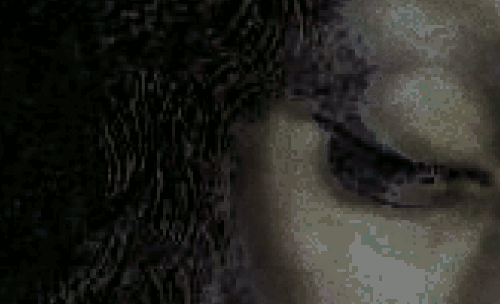
Limited perspective |
- The period of Jewish history after
the end of the exile in Babylon in 538 BC is known as the
post-exilic era.
- Prior to the Jews Babylonian captivity,
their pre-exilic theology carried a spiritual complexity that
was gradually suppressed until the very essense of the divine
was reduced to a limited, one-sided perspective.
- This is
because pre-exilic theology consisted of both
complimentary and opposing forces, a dynamic between the male
and feminine divinities.
|
The word "exilic" is an adjective that means relating to a period of exile, especially the Babylonian Captivity of the Jews. (merriam-webster.com) |
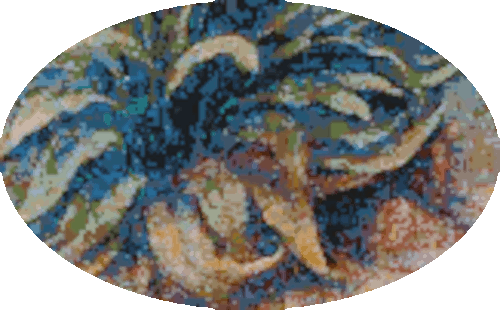
Asherah in her sacred grove |
- Artistic renderings of Asherah frequently portrayed her holding a sacred tree or serpent, symbolizing her connection to nature and the divine.
- Though Asherah
was removed from official worship, her presence never entirely
vanished.
- Sacred groves dedicated to her were discovered, highlighting her prominent role in Israelite religious practices.
|
He took the carved Asherah pole he had made and put it in the temple, of which the Lord had said to David and to his son Solomon, “In this temple and in Jerusalem, which I have chosen out of all the tribes of Israel, I will put my Name forever.
(2 Kings 21:7) |
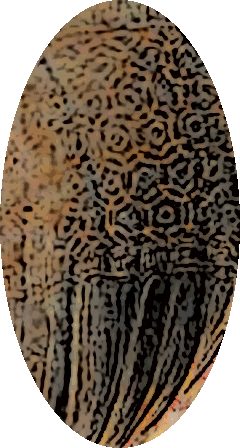
Sacred Asherim poles |
-
Intricate details and craftsmanship of Asherah figurines
recovered from archeological sites, demonstrate the significance of Asherah’s cult in the ancient societies.
- The sacred poles, known as 'asherim,' were sacred symbols associated with Asherah.
- These wooden poles or pillars were erected in her honor, and they represented her presence or connection to the earthly realm.
- Sometimes the poles were made of silver or of carved stone.
|
Another key archaeological element related to Asherah’s cult is the discovery of sacred groves and poles dedicated to her worship. These sacred groves were designated spaces where rituals and ceremonies honoring Asherah took place. They were often located near temples or within natural settings such as forests.
(oldworldgods.com) |
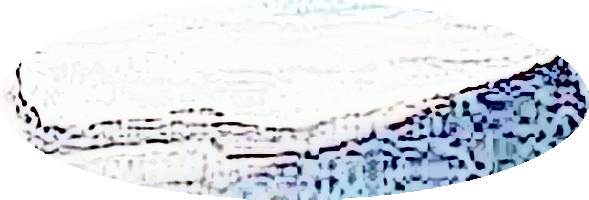
Sophia abandoned |
-
Without the feminine aspect, spirituality came to focus on
power and authority, and thus, was no longer spiritual.
-
The nurturing feminine qualities that Asherah represented were
neglected and abandoned.
- Ancient and modern religious establishments have often favored masculine representations of the divine, relegating the feminine to secondary roles or outright erasing
her.
- This marginalization can be seen in the denigration of goddesses like Asherah in biblical texts and subsequent religious traditions.

Ancient temples |
- Ancient
civilizations had a much deeper understanding of the spiritual
that seems foreign and even surreal to us.
- This was the
ability to access a higher wisdom, a connection point with the
universe that transcended logic and revealed the divine.
- We are beginning to learn what
happened in the ancient temples and who the guardians of the
ancient mysteries were.
- As well as the reason this
knowledge needed to be hidden from ordinary understanding by
the masses.
- Today, much of this connection to spiritual knowledge is
greatly diminished, but there is still a trace of it that
speaks to a time when the human and the divine were much
closer.
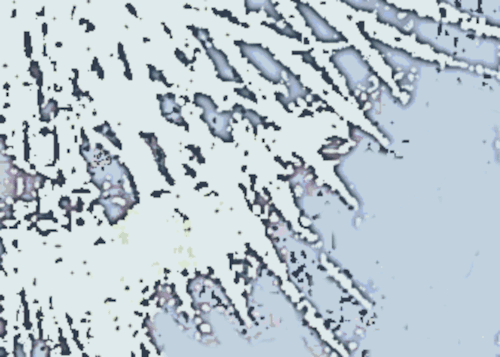
Angel wings |
- In the past 60 years, thanks to a number of stunning archaeological finds, scholars have discovered more about the historical Jesus than they had learned in the previous 1,000 years.
- Researchers
have investigated the mystical roots of Christianity and have
challenged traditional interpretations of the scriptures.
-
This includes a broader view of the divine based on ancient
spiritual practices.
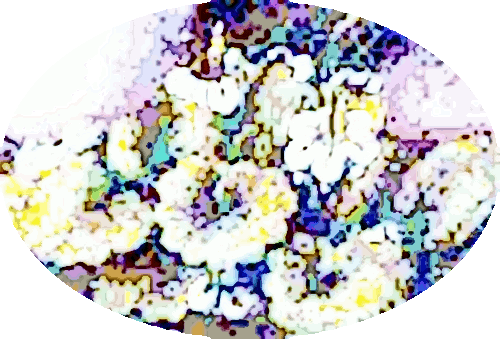
Belief system |
- The Hebrew version of the Old
Testament is very incomplete and that's a problem for all of
us.
- We
have to take into consideration all the Greek books, called
the Apocrypha, which were excluded from the Hebrew
Bible.
- In its broadest sense apocrypha has come to mean any
writings of dubious authority, and this was the verdict that
was given by the group running the reformed Christian church.
- The biggest problem is that so many today have been
brainwashed into believing that studying the
Apocrypha is somehow a heretic and unworthy effort.
|
Apocrypha, (from Greek apokryptein, “to hide away”), in biblical literature, works outside an accepted canon of scripture. The history of the term’s usage indicates that it referred to a body of esoteric writings that were at first prized, later tolerated, and finally excluded.
(britannica.com) |

Veil of darkness |
- It was the Protestants, after
their split
from the teachings of the Catholic Church, who misguidedly
decided that the Hebrew canon is what Christianity needed to
follow.
- As a result, the Catholic Bible contains 72 books and the
Protestant's version only has 66 books.
- This is due to the inclusion of additional books in the Old Testament considered
'deuterocanonical' by the Catholic Church, which are not included in the Protestant canon.
|
Deuterocanonical, relating to, or constituting the books of Scripture contained in the Septuagint but not in the Hebrew canon. (merriam-webster.com) |

Big foot |
- Unfortunately,
if you only follow the books of the Hebrew Old Testament that
the Protestants recognize, you
are not reading the whole of the Old Testament as the early
Christians knew it.
- Seven books are accepted as
deuterocanonical by all the ancient churches: Tobit, Judith,
Baruch, Ecclesiasticus, Wisdom, First and Second Maccabees
and also the Greek additions to Esther and Daniel.
- In addition to these, the Eastern Orthodox Church and the Oriental Orthodox Church include other books in their canons.
|
The Deuterocanon (DC), are certain books and passages considered to be canonical books of the Old Testament by the Catholic Church, the Eastern Orthodox Church, the Oriental Orthodox Church, and the Church of the East. In contrast, modern Rabbinic Judaism and Protestants regard the DC as Apocrypha. (Wikipedia) |

Law |
- But this is a story that has traveled
through many ages and it was not the beginning of the biblical travesty.
- The Book of Enoch was also known as the
Apocalypse of Weeks because each period of the history is designated as a week.
- It is the history of Enoch, Noah, Abraham, the giving of
the Law but without any mention of Moses and the Exodus, the
building of the temple in the 5th week, and then, in the
6th week tragedy struck and there was blindness.
|
All who lived in the temple lost their vision, and the hearts of all of them godlessly forsook Wisdom, and the house of the kingdom was burned and the whole chosen people was scattered. (1 Enoch 93) |
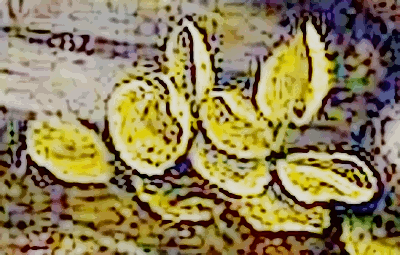
Solomon's temple |
- The Masoretic text chronology from Abraham to Adam was
corrupted by Jews in 160 AD at Zippori for anti-Christian
theological reasons.
- However, the Greek Septuagint
chronology is whole and original and correct.
- Jacob's
birth was 2006 BC, Exodus 1446 BC, construction of Solomon's
temple began in 967 BC.

Wisdom found a desert |
- The Book of Enoch
mentions nothing of the Deuteronomists’ story of the Exodus and their hero Moses, but it does emphasise Enoch, and says that Jerusalem was destroyed after the people in the temple had forsaken Wisdom.
- There is even a poem about the rejected Wisdom.
|
Wisdom went forth to make her dwelling among the children of men, and found no dwelling place
Wisdom returned to her place, and took her seat among the angels. (1 Enoch 42) |

Veneration of the Lady |
- The other great symbol of Wisdom was the Tree of Life
and in the time of Jesus, the veneration of the Lady and her tree was
well known.
- Her tree of fire appears in another story, where her demise is the preface to the story of Moses and the Exodus
and the burning bush was Asherah's tree of fire.
- The story
about Moses learning a new name for God at the burning bush, is recognized as the point at which the compilers of the
Pentateuch joined together the two traditions.
- Abraham, Melchizedek and the patriarchs were joined to Moses and the Exodus, and the God of the Patriarchs was renamed.
- And Enoch and Asherah were totally eliminated.
|
Pentateuch means simply "five books". In Greek, the Pentateuch (which Jews call the Torah) includes the books of Genesis, Exodus, Leviticus, Numbers, and Deuteronomy. These contain some of the oldest and most famous stories in the Bible, including those of Adam and Eve, Jacob and his brother Esau, and Moses, as well as some of the oldest codes of law known, including the Ten Commandments. (merriam-webster.com) |

Tinman is
Asherah's replacement |
- At the burning bush a voice said that the name to be used in future was
YHWH or LORD.
- Later, ‘God said to Moses: I am the Lord. I appeared to Abraham, to Isaac and to Jacob as El Shaddai, but by my name the Lord I did not make myself known to them.'
- Ezekiel had described the voice of the
'Living One' as the voice of Shaddai.
- Shaddai most often is translated as Almighty, but the usual meaning of this Hebrew word is
'breasts,' suggesting that El Shaddai had a female aspect.
|
God spoke further to Moses: This is what you will say to the Israelites: The LORD, the God of your ancestors, the God of Abraham, the God of Isaac, and the God of Jacob, has sent me to you. This is my name forever; this is my title for all generations. (Exodus
3:15) |
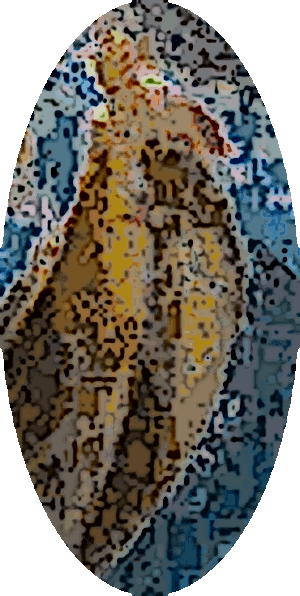
El Shaddai |
- In the stories of the patriarchs, El Shaddai was associated with the gift of fertility:
'May El Shaddai bless you and make you fruitful and multiply you.'
- ‘I am El Shaddai; be fruitful and multiply… kings shall
spring from you.'
- The story of the burning bush representing the transition from the older religion to that of the Deuteronomists,
explains the later Christian custom of representing Mary by the burning bush.
|
This fiery tree had been the ancient symbol of the Mother of the Lord; sometimes Mary is depicted literally within the burning bush, sometimes there is simply a fiery tree named ‘the Mother of God’, and sometimes the burning bush ikon depicts Mother and Son surrounded by the angels of the weathers, that is, the angels of Day One in the Holy of Holies. (orthodoxeurope.org) |

Perception and power |
- The temple was more than a physical
place, it was a gateway to a dimension of perception and
power.
- Despite all, this ancient wisdom still remains and
continues to inspire new spirtual pursuits, waiting to be
rediscovered by those willing to retrieve what was forgotten.
- There is much unspoken wisdom emerging from the past that is
awaiting its return to current generations.
- What will
the upset congregation do? Fire them.
|
Early Christianity is astonishingly different from
the version many of us were taught in Sunday School.
Theologians are understandably reluctant to share new
information that may confuse or upset their
congregations.
(yogainternational.com) |
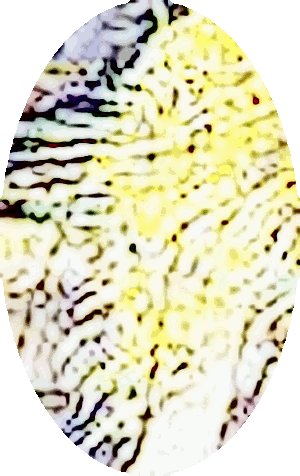
Burning incense |
- In Jeremiah we see a glimpse of
the religion of 7th-century Judea, when the Jews would burn
incense in honor of the Queen of Heaven.
- They would pour out libations to her and make
loaves to represent her.
- Asherah played a central role in
ancient temple practices and other traditions.
|
We will certainly do everything we said we would: We will burn incense to the Queen of Heaven and will pour out drink offerings to her just as we and our ancestors, our kings and our officials did in the towns of Judah and in the streets of Jerusalem. At that time we had plenty of food and were well off and suffered no harm. But ever since we stopped burning incense to the Queen of Heaven and pouring out drink offerings to her, we have had nothing and have been perishing by sword and famine.
(Jeremiah 44:17) |

King Josiah’s reform |
-
Just before the temple was destroyed, there was a massive purge of the religion of Judah and Jerusalem,
which is called King Josiah’s reform.
- The Deuteronomists’ own account of this purge makes it clear that an old copy of a law book had been found in the temple
(the Old Testament).
- This prompted the young king to remove from his kingdom everything which did not comply with the regulations of that law book.
|
Then the king called together all the elders of Judah and Jerusalem. He went up to the temple of the Lord with the people of Judah, the inhabitants of Jerusalem, the priests and the prophets—all the people from the least to the greatest. He read in their hearing all the words of the Book of the Covenant, which had been found in the temple of the Lord.
(2 Kings 23:1-2) |
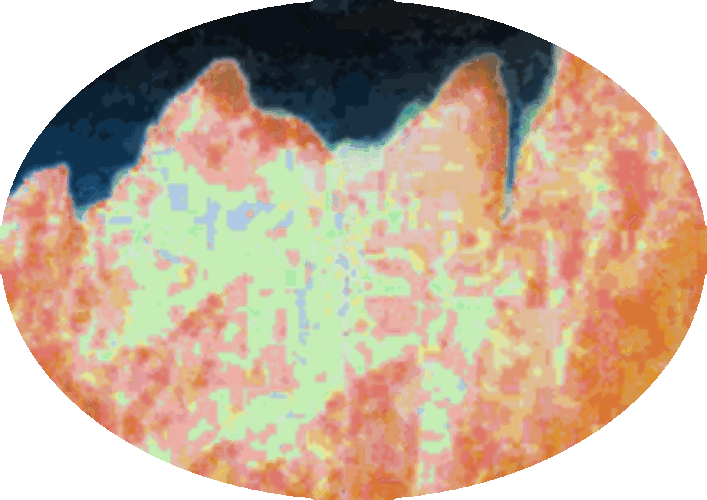
Destroyed by Josiah |
- As a result, anything associated with the worship of Ba'al and Asherah and the host of heaven was removed from the temple and destroyed.
- The priests whom earlier kings had appointed to burn incense in other cities were deposed, but they would not come to serve in Jerusalem; they stayed in their own areas.
|
The king stood by the pillar and renewed the covenant in the presence of the Lord—to follow the Lord and keep his commands, statutes and decrees with all his heart and all his soul, thus confirming the words of the covenant written in this book. Then all the people pledged themselves to the covenant.
(2 Kings 23:3) |

Asherah burned by Kidron |
- The account emphasized the destruction of the Asherah, which was taken from the temple and burned by the Kidron.
- Also, the destruction of the houses of the qdsm, a word usually translated male prostitutes, but which
more accurately describes
'holy ones or angels,' because Josiah removed everything connected with the host of heaven.
- In these houses, women had woven sacred linen garments for Asherah.
- Josiah also removed horses dedicated to the sun which
had stood at the gate of the temple.
|
What the refugees described as abandoning the Queen of Heaven, and Enoch described as forsaking Wisdom must have been this purge by Josiah. What he had tried to destroy was the older religion of Jerusalem and Judah.
(orthodoxeurope.org) |

Neglected |
- After disaster struck and Jerusalem had been destroyed by the Babylonians in 586 BC,
Jewish refugees fled south to Egypt.
- The prophet Jeremiah
accompanied them, and informed them that the disaster had been due to their sins, and that even in Egypt, the punishment would continue.
- The refugees in Pathros confronted Jeremiah and would
not accept what he said because they believed the disaster
occurred because they neglected the Queen of Heaven.
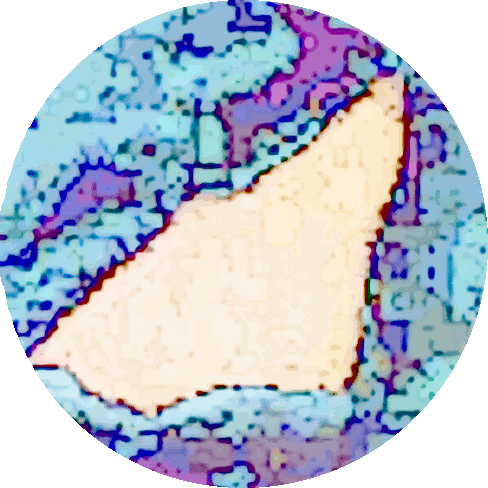
Suppressed and cloaked |
- The decline of Asherah’s following and the subsequent suppression of her worship coincided with the rise of monotheistic beliefs.
-
Early Israelite kings like Hezekiah and others pushed to establish the temple in Jerusalem as the only place where sacrifices could be offered to their male god,
YHWH.
- Consolidating worship in Jerusalem was key to consolidating political and religious power (pretty much two sides of the same coin in those days) in the rulers of Jerusalem.
|
The representation of Asherah in the Hebrew Bible adds another layer of complexity to the debates surrounding her role in Israelite religion. In the texts, Asherah’s worship is often criticized and condemned, with references to the destruction of her sacred groves and poles.
Scholars interpret these passages as evidence of efforts to suppress and eradicate her worship as the Israelite religion embraced monotheism. (oldworldgods.com) |
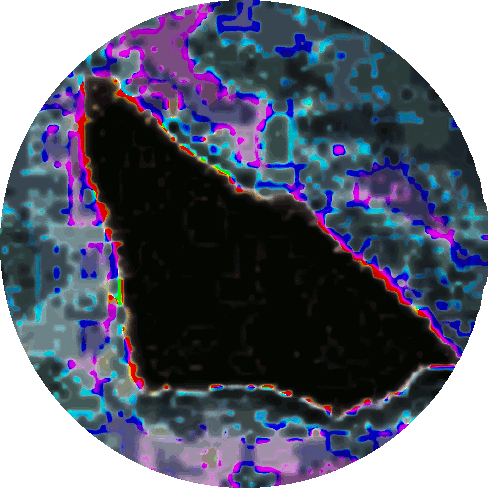
Monotheistic shark |
- The Hebrew Bible chronicles efforts to eliminate sacred groves and poles dedicated to her worship, suggesting a deliberate attempt to erase her influence.
- This suppression played a significant role in the transition towards monotheistic Yahwism, where the worship of a single male deity became the dominant religious practice.
- While the Hebrew Bible portrays Asherah in a negative light, it is important to consider the potential biases and motivations behind these depictions.
|
The male-dominated religious establishment and the rise of monotheism may have led to the denigration and marginalization of the divine feminine, including Asherah. The Hebrew Bible serves as a reflection of these societal and religious shifts rather than an objective account of Asherah’s significance in ancient Israelite religion.
(oldworldgods.com) |

Mount Gerizim |
-
Many Canaanites and Israelites living outside Jerusalem kept
drifting back to old practices.
- They were worshiping at places like Shiloh and Mount Gerizim, where they often acknowledged Asherah as the female consort of El
which was the Israelite name for god in the earliest Biblical texts.
- This was a big deal as the priests and prophets in Jerusalem regarded Asherah as an abomination.
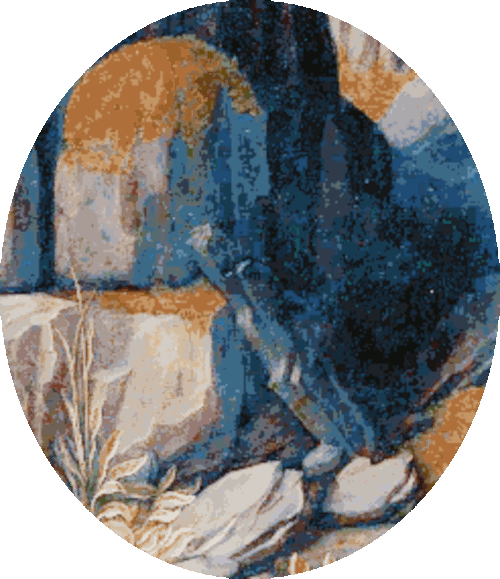
Israelite priest shutting Asherah down |
- The priests often blamed the unauthorized practice of sacrificing to Asherah (as well as Ba'al or El) for all of Israel’s woes.
- There was a constant attempt to try to stifle interest in
these other gods and there was apparently no room for a female goddess in the male dominated religion of the Israelites.
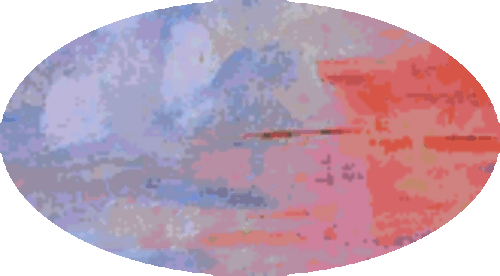
Male-dominated power |
- Historically, societies influenced by patriarchal systems have aimed to maintain male-dominated power structures by suppressing the significance of goddess worship and the recognition of feminine spirituality.
- This repression has perpetuated a belief in the superiority of masculine qualities and diminished the importance of the feminine
in all ways.
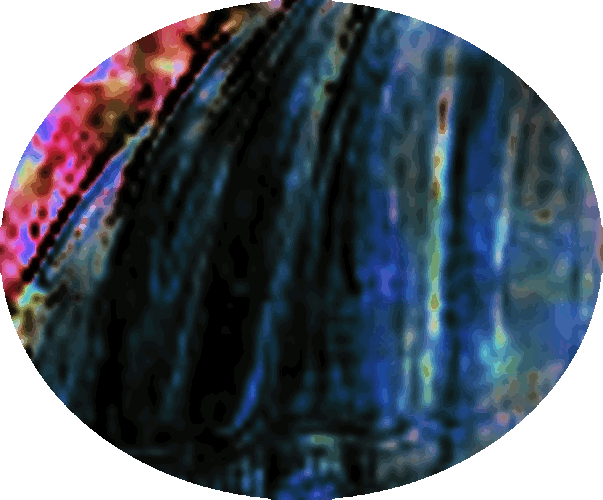
Skirt diminished |
- The marginalization of the divine feminine, including the worship of goddesses like Asherah, has had profound consequences for women’s status and rights in
society.
- By downplaying the significance of the feminine divine, women were relegated to subservient roles, and their voices and contributions were diminished.
|
As the worship of Asherah declined and monotheism took hold, the divine became increasingly associated with masculine attributes, reinforcing gender hierarchies and limiting women’s participation in religious and social spheres. The suppression of Asherah’s worship went hand in hand with the marginalization of women, perpetuating patriarchal structures and stifling opportunities for gender equality.(oldworldgods.com) |

Nature and spirit |
- With this loss of emphasis on
femininity, humanity also lost a connection with nature and
spirit that fostered harmony and integration.
- Many still
believe that Asherah remains at the roots of spirituality,
even to this day.
- And there are many unanswered questions
because our society is so out of balance now.
- Many
wonder if acknowledging this feminine force will help us
restore balance in our spiritual quest.

Light arrives |
- By restoring the divine feminine,
this could be the key to rediscovering the sacred path that
connects not only humanity with the divine, but also
reinforces our relation with the whole.
- In ancient
spiritual traditions, one symbol appears repeatedly, and that
is light, but this light is more than a visible glow; it
is an essense that transcends the material and manifests as a
spiritual force.
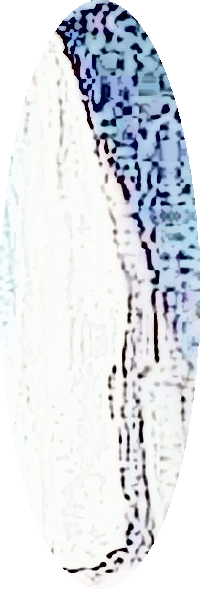
Pure light |
- This light was an essential force in
Solomen's Temple especially within the Holy of Holies, the
most sacred space, where it was believed was where God's
presence dwelt.
- But in ancient Jerusalem, the Holy of
Holies was not just a place of worship, but a bridge between
the human and divine, where the presence of divinity revealed
itself as pure, incomprehensible light.
- Only priests who
had purified themselves to enter the Holy of Holies, could
experience this light.
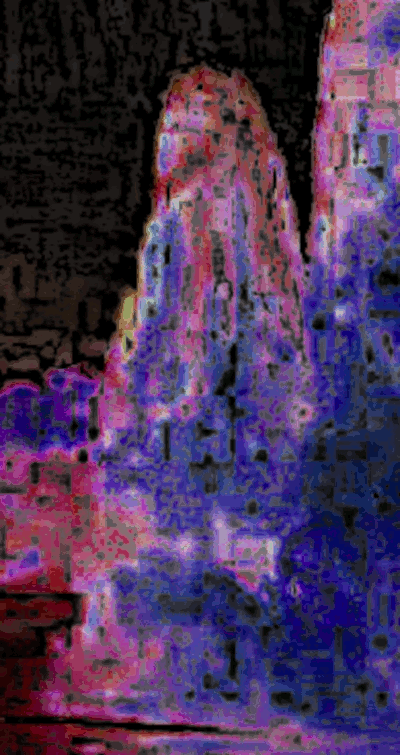
Purified |
- This was a place where the
materiality of the world seemed to dissolve and human
perception transcended physical reality.
- For these
priests, the light was not just a symbol of the divine, but a
direct experience that expanded consciousness and their vision
and ability to interact with the spiritual world.
- It was
as if in complete darkness, this sacred light became a
'bridge' between two realities.
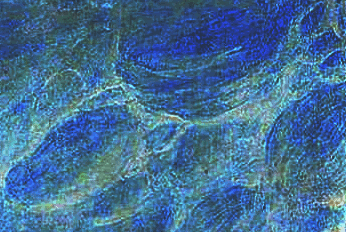
Perception transformed |
- Some believe that this light was not
just a metaphor, but a real spiritual experience for the
ancient priests.
- By coming into contact with the divine
light, their perception was transformed, an experience that
transcended the physical world allowing the priest to perceive
the divine in an expanded dimension.
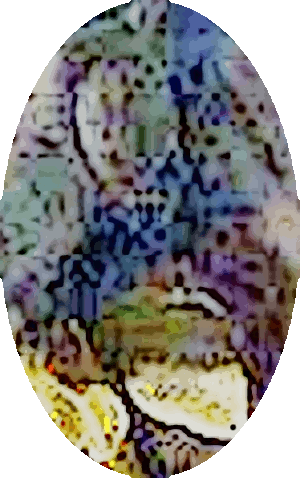
Wake up mummy |
- A reconnection that
not only transcends one's world view, but also one's view of
oneself.
- Both Solomon's Temple, and the Great Pyramid
prove that the divine was not merely something to be
worshiped, but something to be experienced and lived.
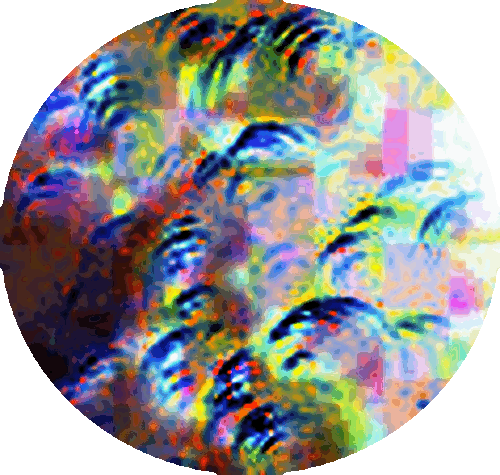
Expanding mind |
- The light in the Holy of Holies
represented God's presence, a spiritual energy that filled the
space and expanded the minds of those who sought it.
- This
quest for light continues to resonate in modern spiritual
practices, symbolizing the desire to access something that
goes beyond the visible and touches the spirit.
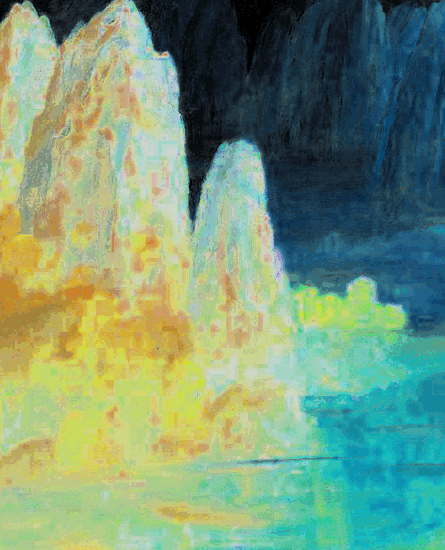
Awakening |
- Could
this light, at its core, be found not only in the Holy of
Holies, but within each of us?
- An inner light that many
still seek, which perhaps has never disappeared, but instead,
awaits our awakening not through physical eyes, but through
the soul.
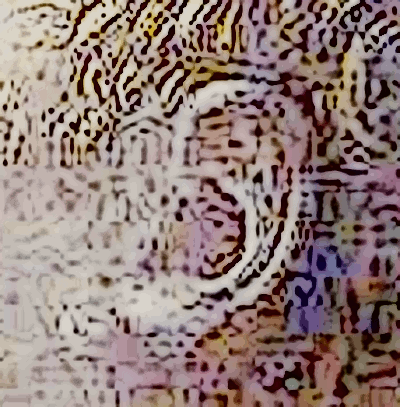
Human body |
- This possibility deepens when you
question whether this 'divine light' that so many are missing,
also relates to the human body.
- A belief that the light
in the Holy of Holies and an enigmatic area of the human body;
the pineal gland.
- This tiny organ is located at the
center of the brain and has fascinated many cultures and
spiritual traditions for centuries and is often refered to as
the 'third eye.'
- The sacred experience that the priests
experienced in the temple, may have been connected to the
pineal gland which would serve as a portal to a perception
beyond everyday reality.

Sleeping cycle |
- The pineal gland is sensitive to
light and regulates sleeping and waking cycles.
- Beyond
that, there is an even deeper role to it; that as a gateway to
expanded consciousness.
- When activated, this gland allows
humans to access this same kind of divine light that the
priests sought in the Holy of Holies.
- A doorway to a new
dimension of perception, where body and spirit intertwine
profoundly.
- We can imagine the pineal gland as an
eternal door where the invisible becomes tangible and the
human touches the divine.
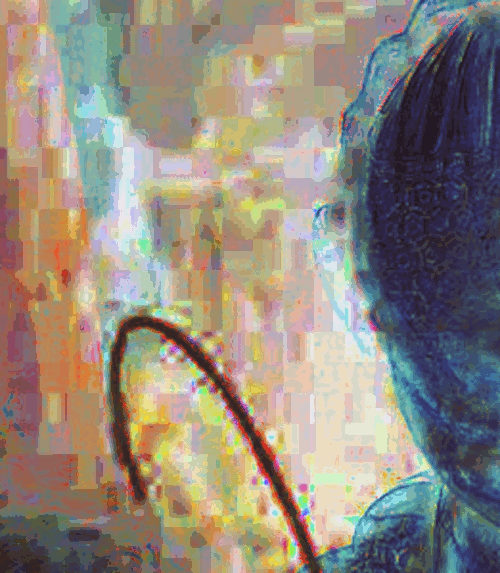
Human perception |
- It is believed that by activating the
pineal gland, or third eye, this enables a kind of
'illumination,' a vision beyond the physical, or spiritual
connection that opens the doors of our perception.
- The
inner light sought in spiritual practices may indeed lie
within us, accessible through the pineal gland.
- Perhaps
this is the same divine light that the ancient priests
discovered in the Holy of Holies, now preserved in the inner
sanctuary of every human being.

Meditation temple |
- Today, practices like meditation,
sensory deprivation, and fasting are associated with pineal
activation.
- Methods such as these aim to disconnect a
person from external distractions in order to awaken inner
perception.
- Many spiritual traditions hold that following
these methods awakens the pineal gland to a level akin to the
Holy of Holies, an internal space (temple) where the spirit
reveals itself.
- This is a light that transcends the
rational mind and offers a sense of unity with the whole, or
One.
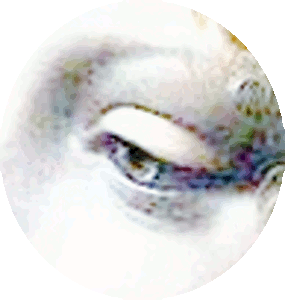
Awaiting activation |
- This experience is not unlike that of
the ancient priests in the Holy of Holies; a light that
transcends the rational mind and offers a sense of unity
within the whole.
- Not only is this a transformative
experience, but it shows us that Solomon's Temple and the
Great Pyramid were not merely physical structures, but also
representations of the inner temple, or structure, within us
all.
- This means the path to the divine is not lost, but
remains safeguarded within us, waiting for activation.

Spiritual journey |
- This concept reframes what we
conceive as a 'spiritual journey' because what if perceiving a
light that is unseen by physical eyes but felt by the soul is
true enlightenment?
- What does it truly mean to attain
enlightenment, is it merely a sensation of peace, contentment
and understanding, or is it something far deeper.
- A
transformative experience that transcends logic and results in
a profound awareness.

Expanded consciousness |
- At the heart of ancient
spirituality, Sages understood that profound knowledge of the
universe is not achieved by the rational mind.
- They knew
that it is through the heart and soul where enlightenment
becomes a way to perceive the invisible and sense the
intangible.
- This state is often called 'expanded
consciousness,' an experience where the boundaries between
oneself and the universe dissolve, offering a vast view of
existence.
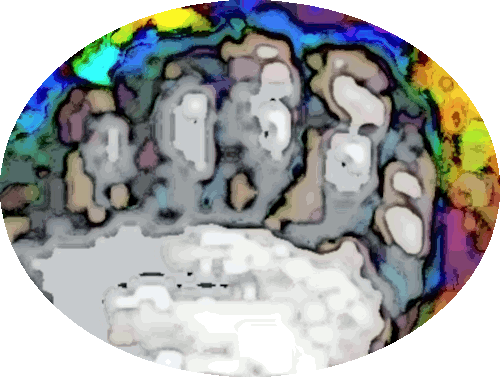
Ancient priests and mystics |
- Expansion of consciousness was the true goal
of the ancient priests and mystics.
- The temple, with its
practices and symbolism, was a portal that allowed the mind to
expand to a new reality, revealing the physical world as
merely a fraction of something far greater.
- What is the
meaning of expanding consciousness, perhaps it is to recognize
the universe in its essence taking us beyond perceptual
physical limitations.
- Realizing that each human being is
part of a larger whole.
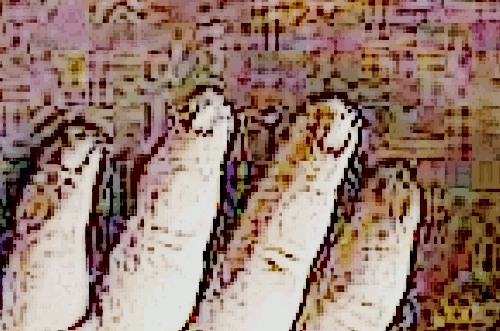
Open internal doors |
- Many cultures over the centuries have
practiced meditation and fasting to open internal doors that
are usually inaccessible.
- In meditation, as the mind
quiets, the individual begins to feel a deep connection with
everything that exists as if their own soul aligns with the
universe.
- Fasting frees the body from physical
distractions and intensifies spiritual perception.
-
These practices help activate the pineal gland and open the
third eye, thus broadening perception beyond ordinary reality.
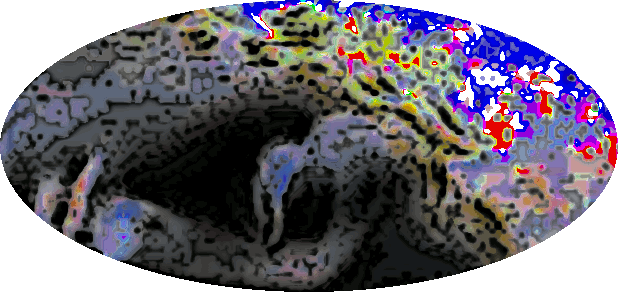
Dimension beyond words |
- For those who attain enlightenment,
describing it is difficult.
- It's like touching a
dimension beyond words, where time ceases to exist, and space
becomes a unified field of energy.
- Within this state, the
mind dissolves within the boundaries of the whole, and vision
expands beyond physical limitations.
- Questions become
unneccessary, as understanding is complete and peace is
absolute.

Journey to the true essense |
- This expansion of consciousness is not an
endpoint, but rather, a state to be experienced and a journey
to the true essense of being.
- This light, this expanded
awareness, might be what the ancients considered divine: a
living force inside and outside us, which is accessible to
those who open their hearts to feel it.
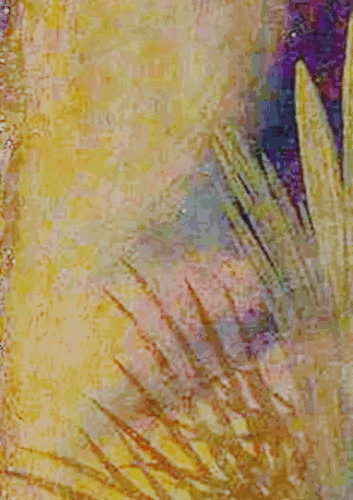
Union between the divine and the human |
- For spiritualist's there is a profound, almost hidden meaning in Christ's
role within the spiritual tradition.
- This is something
that connects him to the mystery of Solomon's Temple and
elevates him to the eternal symbol of the union between the
divine and the human.

Uniting heaven and earth |
- Research shows that the early
Christians saw Christ not only as a redeemer but as an eternal
priest, an heir to the spiritual practices of the ancient
temple.
- Christ thus becomes a living continuation of the
work of Solomon's Temple, which began as a labor of uniting
heaven and earth, a revelation of sacred presence in the
world.
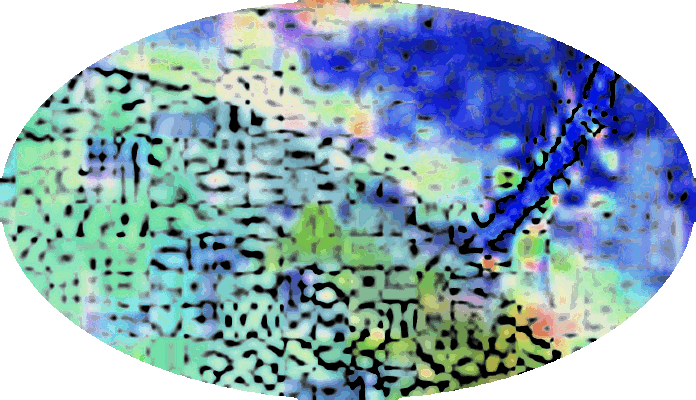
Living energy |
- An eternal priests refers to Jesus'
role as mediator and the one who connects humanity with the
divine.
- This is accomplished not merely through words,
but through a living energy that integrates the spiritual and
the physical.
- Jesus not only offered a new way of
understanding faith but also embodied the symbolism of the
temple, where the priestly role involved direct contact with
the divine, a gateway to a new vision of existence.
- For
his early followers, Jesus was seen as the 'Son of Man' and
associated with the mystical and transendent power that the
priests sought in the temple.
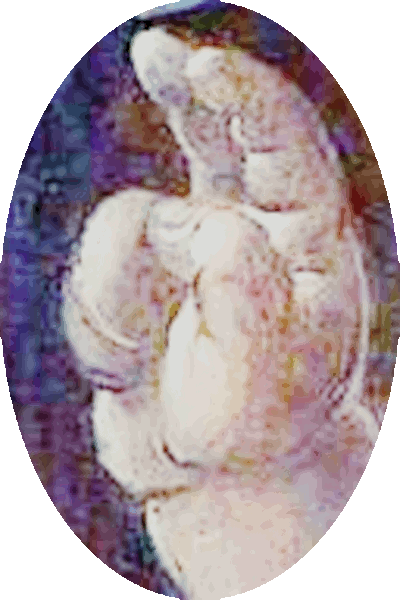
Symbol of salvation |
- Jesus' role as the restorer of an
ancient spiritual tradition of the temple, was a practice that
was richer and more complex than the role we see him in today.
- He is the cosmic priest who transformed the concept of
devotion to the divine into something profound that touched
the essense of the human spirit.
- In this view, Christ is
more than a symbol of salvation; he is the mediator who unites
the divine and the human in a single experience.
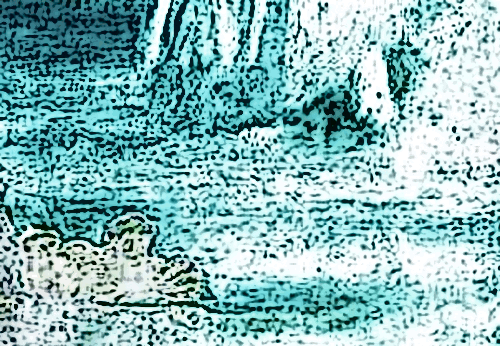
Building a bridge for humanity |
- By becoming the 'eternal high priest'
he offers a bridge for humanity to reach a spiritual dimension
that would otherwise remain inaccessible.
- Envision Christ
as the one who, by his very essense, keeps alive the
connection between world, creating a continuous flow of sacred
energy.
- This energy moves from the physical temple to the
inner temple of each being.
- His presence endures, waiting
for those who seek the deepest truth and ready to enter the
Holy of Holies he represents.
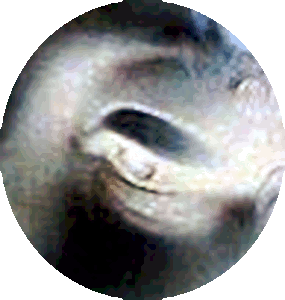
Inner temple |
- In this context, temple practice is
no longer a relic of the past, but a living reality in Jesus
and his mission, inviting everyone to find their own inner
temple.
- This concept of Christ reveals that the ancient
temple was more than a place of worship, it was an image of
the universe.
- Jesus is the link between the divine and
the human, the eternal, and the transient.
- In the temple,
the ancients did not seek only a distant God; they sought a
God dwelling within them, a force that united them to the
whole.
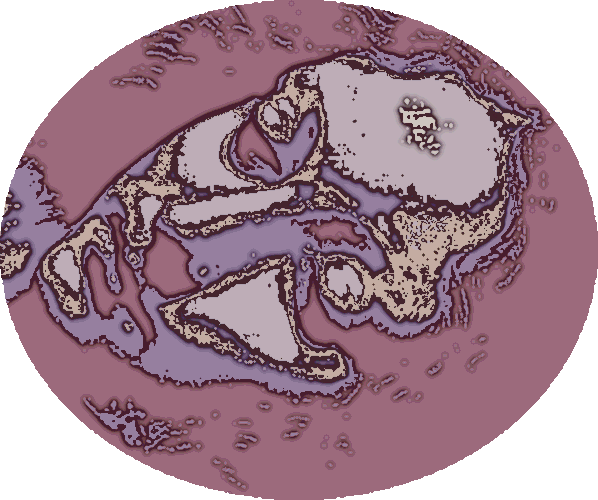
Sacred space |
- Christ embodies the temple making the
sacred space something everyone can experience as long as they
are ready to see beyond appearances.
- This vision of
Christ as an eternal priest is a way of retrieving
Christianity's roots, where the sacred was not only revered
but experienced.
- The ritual, practice and symbolism of
the temple come alive in Christ, who opens a new door to the
mystical experience.
- Those who understand this dimension
of Christ see him as more than a savior; he is the
manisfestation of the divine in comprehensible form, an
eternal bridge for seekers.
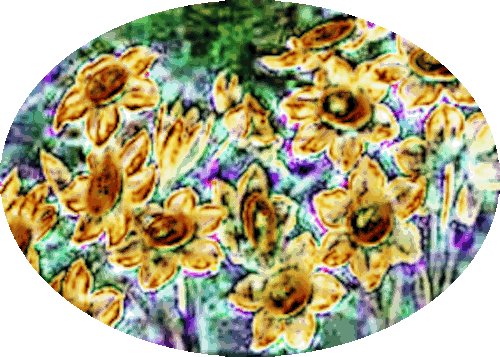
Followers |
- Reflecting on this vision, an
essential question arises; if Christ represents the temple,
the divine and the eternal, what does this mean for his
followers?
- The answer lies in Christ's invitation for
each of us to find our own Holy of Holies.
- Are we ready
for this inner journey where the eternal priest is not distant
but beside us, leading us to the divine dwelling within.
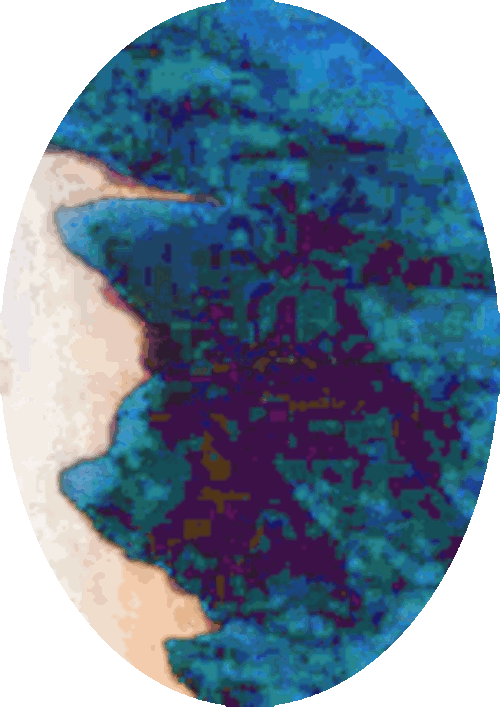
Mystical experiences |
-
Among ancient texts, there is a book that challenges common
understanding and offers a distinct vision of heaven,
judgment, and what lies beyond life; the Book of Enoch.
- We need to be ready for this inner
journey, where the eternal priest is not distant but beside
us, leading us to the divine dwelling within.
- In the
Book of Enoch, we can see glimpses of the mystical
experiences that the ancient priests of Solomon's Temple might
have encountered which is a kind of spiritual preparation for
the afterlife.

Enoch the protagonist |
- Enoch, the protagonist of this apocryphal
work, is not merely a sage or prophet; he symbolizes one who
crosses human boundaries and reaches a profound spiritual
understanding of the universe.
- In the narrative, Enoch is
taken to heaven, where he witnesses angelic hierarchies and
the final judgment.

Enoch walked with God |
- Enoch represents humanity
transcending ordinary reality and, in doing so, approaching
the divine in a journey of spiritual ascent.
- The
spirituality of the ancient temple revolved around this idea
of ascension.
- Enoch's visions are a model for humanity to
experience the sacred, transcending physical death and realize
that life is not confined to the body.
- Thus, Enoch
symbolizes the quest for transcendence, where the spirit rises
to a greater reality, enveloped in light and knowledge.

Enoch vision |
- The most fascinating aspect of Enoch's account is the
idea that heaven is not a distant, unreachable place, but a
spiritual state accessible to those prepared to surpass
ordinary perception.
- The Book of Enoch,
preserves a mystical tradition already known to the ancients,
a vision in which direct contact with the divine was not only
possible but desireable.

Enoch's ascension |
- Enoch's ascension invites us to
imagine a life extending beyond the physical, opening up an
existence where the sacred and the human coexist.
- With
this view, the concept of the afterlife takes on a new
perspective.
- It is not merely a promise of comfort for
the living, but an experience of expanded consciousness
attainable for those seeking to see beyond the physical.
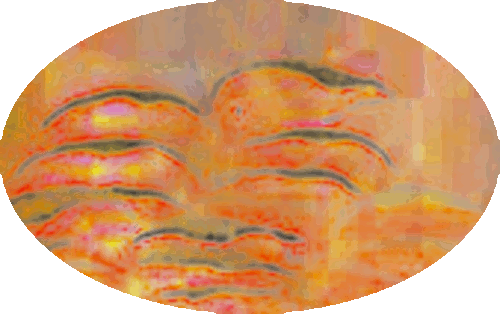
Celestial beings |
- In Enoch's journey, he encounters
celestial beings who guide and reveal the universe, offering
knowledge that transcends the visible.
- This vision
reflects the belief that, at life's end, humans may ascend to
a spiritual dimension guided by higher forces.
- But what
did Enoch truly encounter in these realms beyond life?
- He
glimpsed what few dare to imagine; a divine order permeating
all things, awaiting those who seek profound answers.
-
This understanding is powerful and transformative, as it
expands the view of life and death.
- The afterlife, is not
an end but a transition to a continuous journey of
self-discovery and union with the divine.
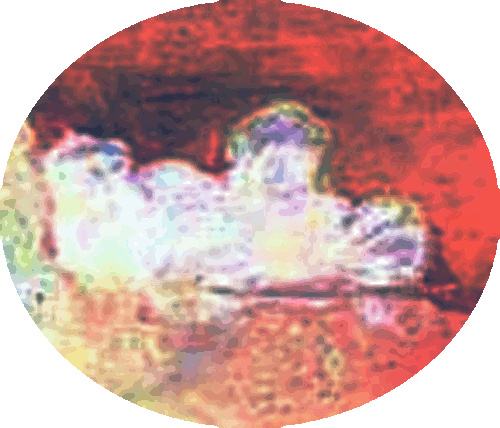
Enoch on a spiritual journey |
- Enoch does not see heaven as rest but
as a place of revelation, where the soul finds the full
meaning of existence.
- His vision reflects a spiritual
journey that, though challenging, promises a transformation
that few are to undertake.
- The exploration in the
Book of Enoch challenges readers to consider that perhaps
there are layers of existence hidden from most but accessible
to those following a spiritual path.

Boundary between heaven and earth |
- This message suggests that the divine is not merely a
distant entity but a nearby presence ready to guide those open
to seeing beyond the material world.
- Enoch represents the
common human who, is seeking to understand the whole,
transcends limitations and becomes someone who dwells on the
boundary between heaven and earth.
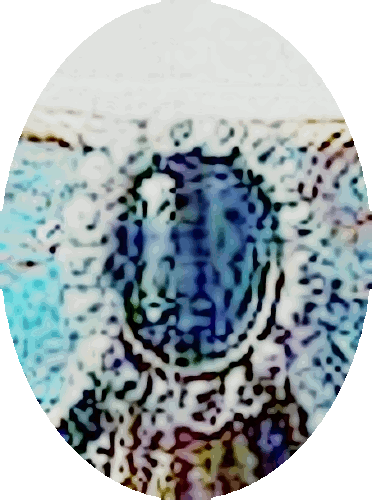
Reflecting |
- Reflecting on this, an essential
question emerges: could Enoch's vision, his revelations and
his contact wit spiritual beings, point to a dimension that
already exists within us?
- Enoch's path reveals the
spiritual potential that all of us carry but rarely access.
- It is as if heaven were always within reach, not only after
death but also in life, when we become aware of this sacred
dimension.
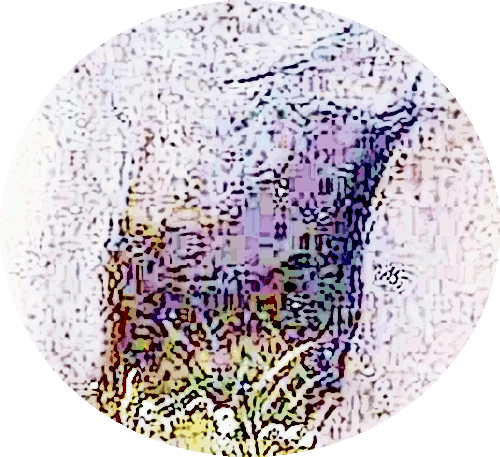
Seeing the invisible |
- The message of the Book of Enoch offers a new
vision of existence, in which the soul knows no bounds and the
divine reveals itself in the constant quest for truth.
-
This is Enoch's great revelation: the possibility of seeing
the invisible, hearing the inaudible, and understanding that,
beyond the limits of body and time, there is eternal
continuity.
- As we reflect on this revelation, one
final question remains: if heaven can be accessed now, what
must we do to open that door?

Holy Spirit nurturing |
- Perhaps Enoch leaves us
clues, but the full answer may lie within each of us, awaiting
our readiness for the next step toward the sacred.
- The
journey through ancient spirituality reveals a timeless truth;
the divine is only complete in its duality.
- The Holy
Spirit, as it is represented in Christianity, represents more
than an impersonal force; it may be the very expression of the
forgotten and distanced sacred feminine.

Harmonized |
- The Holy Spirit
embodies the feminine side of God, a nurturing, welcoming
presence that balances the masculine.
- This view not only challenges
traditional conceptions of the divine but suggests a more
complete spirituality where opposing forces, feminine and
masculine, are harmonized.
- From this perspective, the
Holy Spirit is not just a distant energy but a 'Divine
Mother,' the principle of embracing and nurturing,
representing the compassionate side of the divine.
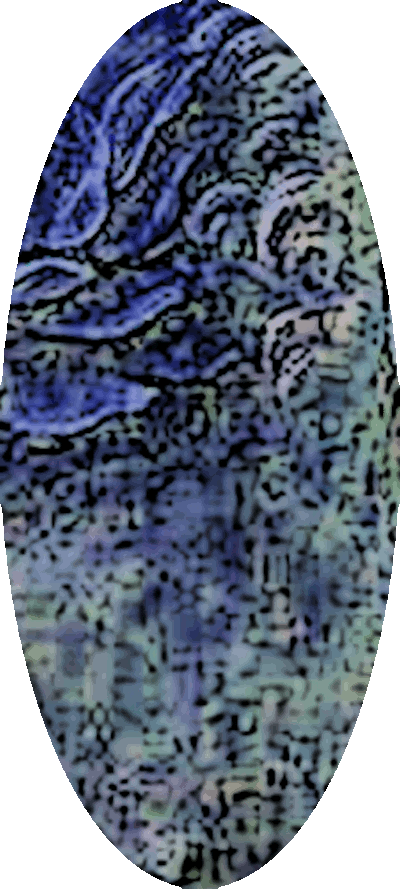
Wisdom |
- The scriptures mention 'Wisdom,' which is associated
with the archetypal figure strongly linked to the goddess
Asherah and the sacred feminine in temple practices.
- With
this understanding, the Holy Spirit ceases to be an abstract
force and becomes a symbol of harmony, renewal, and divine
care, sacred aspects that have been marginalized over time.
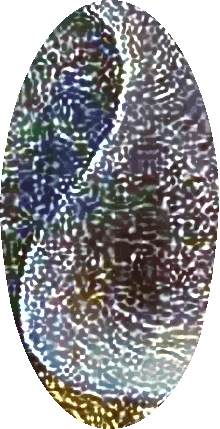
Holy Spirit yin yang |
- The understanding of the Holy Spirit
as the divine feminine is not just a theological issue but a
key to restoring spiritual balance between the polarities of
the divine.
- The absence of figures like Asherah, who were
removed from tradition, left a gap in human spirituality,
creating a concept of the sacred that emphasizes power and
authority but has lost warmth and inclusiveness.
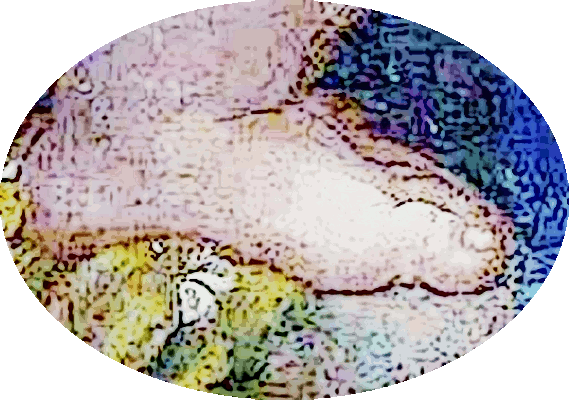
Nourishment and mothering |
- This lack of the divine feminine may have influenced a
restrictive view of spirituality, where power prevails over
nourishment and mothering.
- The return to the sacred
feminine, therefore, opens the way to a spirituality that
embraces and unites.
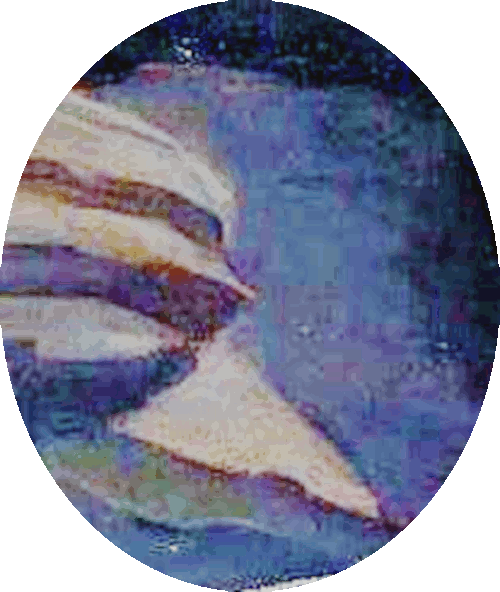
Living force |
- This reunion with the divine feminine
is essential to creating a spirituality that does not divide
but integrates.
- The divine, seen in this new light,
becomes not only an object of worship but a living force
within each of us, where the Holy Spirit represents this deep
presence that guides us back to balance.
- In seeking this
integration, we achieve a fuller view of the sacred and,
ultimately, of ourselves.
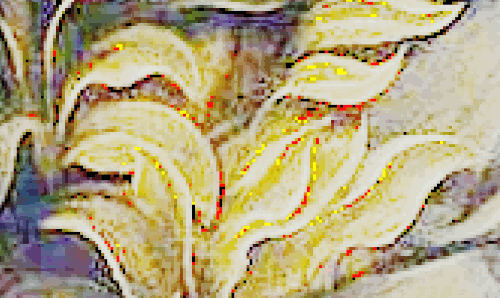
Energies of the divine |
- Spirituality becomes a return to the inner temple, where
the energies of the divine masculine and feminine await
recognition and reconciliation.
- Ideas like this invites
us to revisit this lost essence, a return to the inner temple,
where the divine masculine and feminine coexist in harmony,
awaiting for each of us to acknowlege and integrate them.
- Could it be that by seeking peace
between opposing forces, we are discovering the true nature of
the sacred?
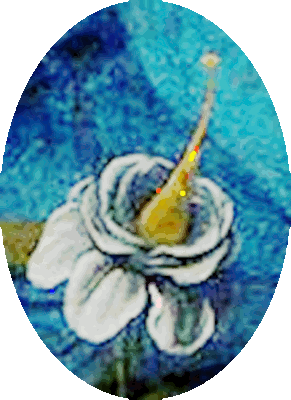
True nature of the sacred |
- By opening this path to the Holy Spirit as
feminine, we access a balance that redefines our understanding
of the sacred and strengthens our connection with the whole.
- Every spiritual transformation begins with understanding
one's role as co-creator of the world.
- True connection to
this divine wisdom, this peace between opposing forces, is
cultivated through self-knowledge and meditation practices
that help us reach a higher state of consciousness.
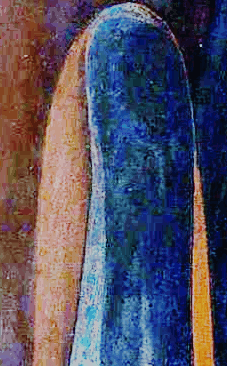
Opening doors |
- Rediscovering Asherah’s presence allows for a reevaluation of traditional religious narratives, challenging male-dominated interpretations and reclaiming the divine feminine’s rightful place.
-
This opens doors for diverse interpretations and nurturing inclusive
spiritual practices that honor the inherent worth and wisdom of both genders.
|
Celebrating Asherah’s legacy is an act of empowerment for women and all those who have suffered under patriarchal systems, offering a renewed sense of identity, spirituality, and equality.(oldworldgods.com) |
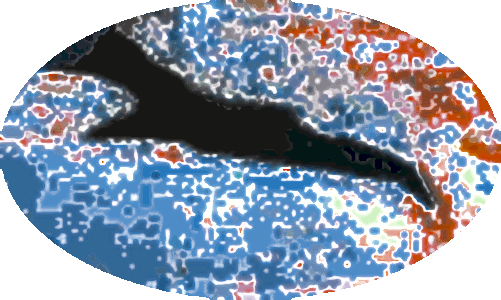
Sharks at work |
- DNA means God, Lord and Master, the
fire at the center of my being!
|
It's all so confusing let's summarize:
- The original Hebrew
beliefs included polytheism and Asherah as Goddess of
Heaven and their pre-exilic
theology existed to 538 BC.
- When the Greek Septuagint, the oldest
existing Bible, used by the ancients for centuries, was
transcribed it contained the Apocrypha.
- The Book of Enoch is the history of Enoch,
Noah, Abraham, the giving of the Law but without any
mention of Moses and the Exodus and this book was
completely ignored.
- The Masoretic Scribes created
'Hebrew' language and the Hebrew Bible, a version of the
Old Testament is very incomplete because all the Greek books, called
the Apocrypha, were excluded.
- The scribes claimed the Hebrew language was ancient
but they have no manuscripts and it at most it was a
dead language and possibly never existed. At any rate,
impossible to 'translate' like the scribes claimed
thousands of years after the fact.
- The Pharisees and scribes hated Jesus and wanted
females powerless, and they didn't want Christianity
to spread, so they created a lie (the Bible story of
Moses) to retain power.
- The Jews also changed their religion to monotheistic, with one male god and deleted the divine feminine
and the rest of the pantheon.
- The story
about Moses learning a new name for God at the burning bush, is recognized as the point at which the compilers of the
Pentateuch (Torah) joined together the two traditions
and created an entirely different story and purpose
for the Bible (that they're somehow the only chosen
ones and we should bow down to them).
- What we know as Jerusalem is not the original which
was the Jerusalem Temple in Egypt where Jesus and John
the Baptist preached, and the Holy City
was Heliopolis in Egypt, not Palestine.
- The Catholic Deuteronomist text was
contrived strictly from the Hebrew Bible with the story of Moses and Asherah as a
burning bush (to get rid of her).
- The Protestants removed the
Deuteronomist text but they still have Moses.
- Note the rebalance of the divine feminine will NOT
be accomplished by rolling out fake females (who are
really bald men wearing wigs) and thinking they're
going to continue to dupe us.
- Jesus kicked over their tables in the temple and he
will do so again. |
|
|

